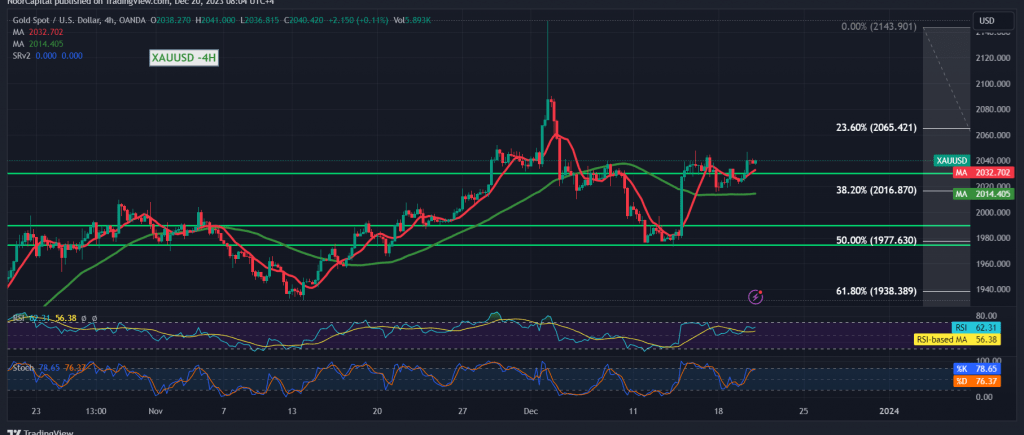Gold displayed an upward trend in the previous trading session, aligning with the positive outlook anticipated in the prior technical report. It reached the first official target of $2041 and approached the second target of $2049, achieving its highest level at $2047 per ounce.
From a technical perspective, examining the 4-hour time frame chart reveals that gold has secured immediate stability above the 2034 resistance level. Importantly, it maintains its position above the key level that safeguards the uptrend initiated in 2016, the 38.20% Fibonacci retracement. The simple moving averages continue to provide support, reinforcing the potential for further upward movement.
As the upward trend persists, the focus is on the significance of price consolidation above $2051, which serves as a motivating factor that could enhance and accelerate the strength of the daily upward trend. Awaiting potential targets, the next level is at $2062, with possible gains extending towards $2077.
It is crucial to note that a close below the 2016 38.20% Fibonacci retracement, especially on at least an hour candle, would invalidate the activation of the bullish scenario. In such a scenario, gold may enter a bearish correction with downside targets around $2007 and $2000.
Warning: The risk level is considered high.
Warning: Heightened risk is associated with ongoing geopolitical tensions, potentially resulting in increased price volatility. Caution and prudent risk management are recommended.
Note: Trading on CFDs involves risks. Therefore, all scenarios may be possible. This article is not a recommendation to buy or sell but rather an explanatory reading of the price movement on the chart.
| S1: |
 Noor Trends News, Technical Analysis, Educational Tools and Recommendations
Noor Trends News, Technical Analysis, Educational Tools and Recommendations

